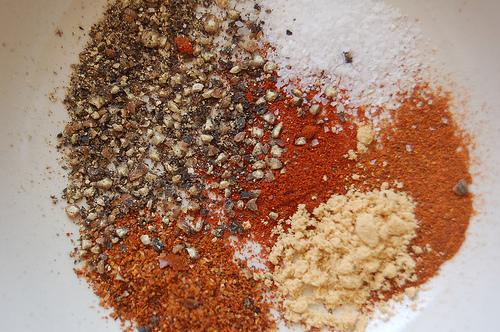You Are What You Eat: Spice rubs for fast meals!
Katy Wilkens has a variety of spice rub recipes you can use for your quick meals.
Mon, 05/06/2013
By Katy Wilkens, MS, RD
Don’t have time to cook from scratch some nights? Not to worry, as long as you avoid those packaged convenience meals from the store. They are sodium-laced and, let’s face it, not very good.
Make your own frozen meals to have handy when you need them. You control the amount of sodium, helping to keep your heart and kidneys healthy. Plus you’ll save money.
Set aside one or two days every month to mass produce some meals to freeze. Try buying a variety of chicken breasts, pork chops, tri-tip steaks and tilapia or salmon filets. Select portions that are all about the same size and thickness. Buy three bags of your favorite frozen vegetables, plain ones without sauce. Try peas, mixed veggies and carrots.
To prepare your meals:
Turn on the broiler or barbecue grill, rub the assorted meats with a variety of low-sodium spice rubs (recipes below). Put the meat on the grill or under the broiler. It should take about 5 minutes per side, but watch and check. You might need to take the fish off sooner, or leave the chicken on longer. While the meat is grilling, line up a bunch of one-meal containers.
Place 5 small red or white new potatoes in the microwave for about 10 minutes.
Cook about 3 cups of rice on the stove or in a rice cooker.
When the protein is done, place a chicken breast in a container, a pork chop in the next, and so on. Add a potato or a scoop of rice to each meal. Pour in a half cup of frozen veggies, slap the lid on, label it, and throw it in the freezer.
In no time at all, you have made 10 to 15 frozen meals for less than half the cost, and certainly a tenth of the salt. To reheat, just microwave as you would any frozen meal.
Try the recipes below for no-sodium spice rubs. Be sure to use onion and garlic powder, rather than onion or garlic salt, to save lots of sodium. These recipes call for dried herbs. If you use fresh herbs, just double or triple the amount. When you’ve tried some of these, experiment and come up with your own flavor combinations.
Oriental rub
2 tablespoons onion powder
2 tablespoons garlic powder
2 tablespoons ground ginger
2 tablespoons ground pepper
Yield: 1/4 cup. Use 1/4 or 1/2 teaspoon per pound of meat, fish or poultry.
Savory rub
1/2 teaspoon celery seed
2 tablespoons marjoram or oregano
2 tablespoons thyme
1 tablespoon basil
Yield: 1/2 cup.
Seafood rub
4 teaspoons dried parsley
2 tablespoons dried chives, dill or tarragon
1/2 teaspoon pepper
1 tablespoon dried lemon peel
Optional:
2 teaspoons dried mustard or garlic powder
1 teaspoon ground ginger
Yield: 1/2 cup.
Mexican rub
6 teaspoons chili powder
2 teaspoons ground cumin
1/2 teaspoon onion powder
1/2 teaspoon garlic powder
Optional:
3/4 teaspoon thyme
3/4 teaspoon oregano
3 teaspoons basil
1/2 teaspoon pepper
Yield: 1/2 cup.
Remember, spices lose their flavor as they age, and you may need to use more on your food if your spices are old. Store the rubs you make in air-tight containers to keep them fresh. There are several salt-free seasoning blends on the market that work well, too.
The recipes in this column are meant for people who want to keep their kidneys healthy and blood pressure down by following a low-sodium diet. In most cases, except for dialysis patients, a diet high in potassium is thought to help lower high blood pressure. These recipes are not intended for people on dialysis without the supervision of a registered dietitian.
Katy G. Wilkens is a registered dietitian and department head at Northwest Kidney Centers. She has a Master of Science degree in nutritional sciences from the University of Washington. See more of her recipes at www.nwkidney.org.
Follow Ballard News-Tribune on Facebook at www.facebook.com/ballardnewstrib
And Twitter at http://twitter.com/ballardnewstrib


